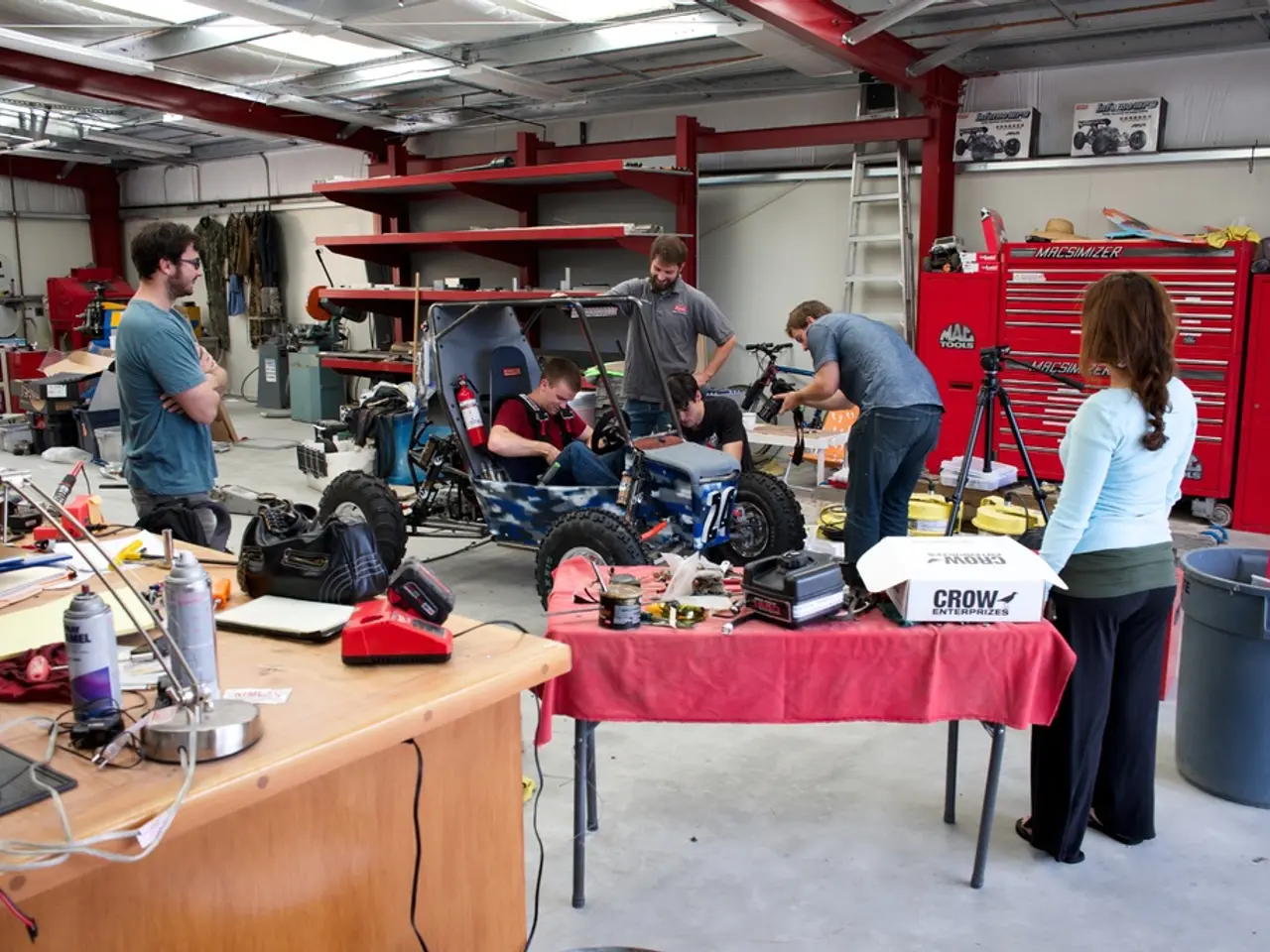Perfecting Gladhands: Guaranteeing Truck Air Brake Security
Gladhands, the connectors that link the air brake lines between a truck's tractor and trailer, play a crucial role in ensuring smooth airflow for effective braking. Here are some maintenance and troubleshooting tips to keep your gladhands in top condition.
Regular Visual Inspections
Regularly check your gladhands for signs of wear, corrosion, damage, or cracks. Ensure the sealing gaskets (rubber seals) are intact and not hardened or deformed, which can cause leaks.
Leak Detection
Use air leak detection solutions or soapy water to find escaping air from the connections. Address any leaks immediately, as air loss can impair braking systems and overall safety.
Cleaning
Keep your gladhands clean from dirt, debris, and rust. Dirt or rust buildup can prevent proper sealing and lead to air leaks. Wipe connectors before coupling to improve the seal.
Lubrication
Some gladhands benefit from light lubrication on the seals and swivel components to ease connection and disconnection, reducing wear and tear.
Air Tank Maintenance
Drain air tanks regularly to prevent moisture buildup that can travel to gladhands and cause corrosion or freezing, which affects performance.
Replacement of Seals
Replace worn or damaged rubber gaskets (gladhand seals) frequently. Bulk replacements are often available, making it economical to maintain air-tight seals.
Connection Checks
Make sure the gladhand connectors couple correctly and securely. Misalignment or damage can cause air leaks or failure in the air brake system.
Troubleshooting Symptoms
If you experience air leaks, reduced brake efficiency, or audible hissing at the connection, inspect gladhands first for damaged seals or improper coupling.
Implementing these maintenance steps can extend the lifespan of gladhands, ensure reliable air brake operation, and minimize downtime for heavy-duty trucks.
Properly Maintaining Gladhands
Properly maintaining gladhands is essential for ensuring a safer and more efficient truck operation. Use a light lubricant to keep the seals flexible during maintenance.
Types of Gladhands
There are different types of gladhands, including standard, locking, straight, and 90-degree gladhands, each with specific features and uses.
Standard gladhands are durable, easy to connect, and widely compatible, making them suitable for general-purpose use. Locking gladhands have a locking mechanism to prevent accidental disconnections, making them ideal for high-security applications, long hauls, or rough terrains.
Straight gladhands are ideal for tight spaces where flexibility is needed, while 90-degree gladhands help reduce hose wear and tear in specific configurations.
Importance of Maintenance
Regular maintenance can help extend the lifespan of gladhands. Never ignore air leaks or unusual noises coming from gladhands. Replace gladhands at the first sign of damage to avoid costly repairs.
By following these maintenance tips, you can ensure your gladhands remain in good working order, contributing to safer and more efficient truck operations.
Integrating technology in your lifestyle can help identify potential issues with your gladhands, such as air leaks or improper coupling, by using apps that monitor a truck's braking system.
Incorporating sports mechanics into your truck maintenance routine can help maintain the effectiveness of your gladhands, as regular exercise strengthens the body's ability to maintain focus during lengthy, strenuous tasks like inspecting and maintaining truck components.




